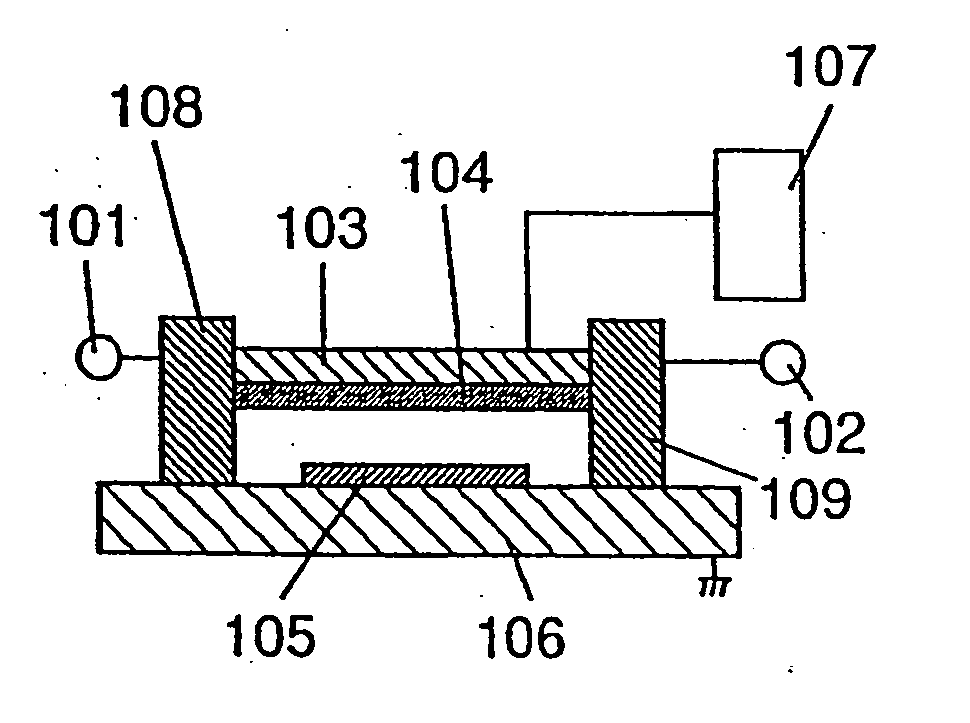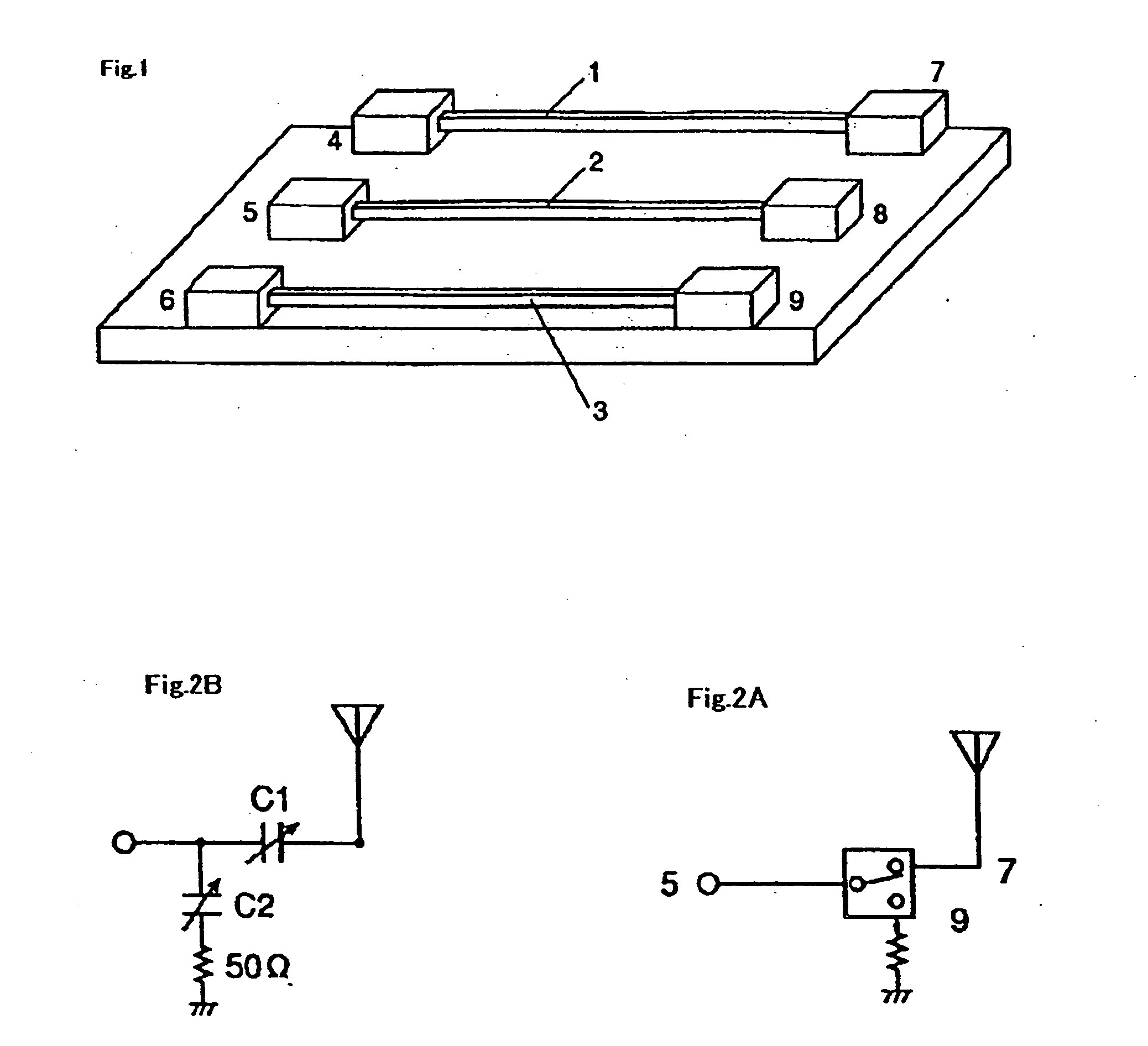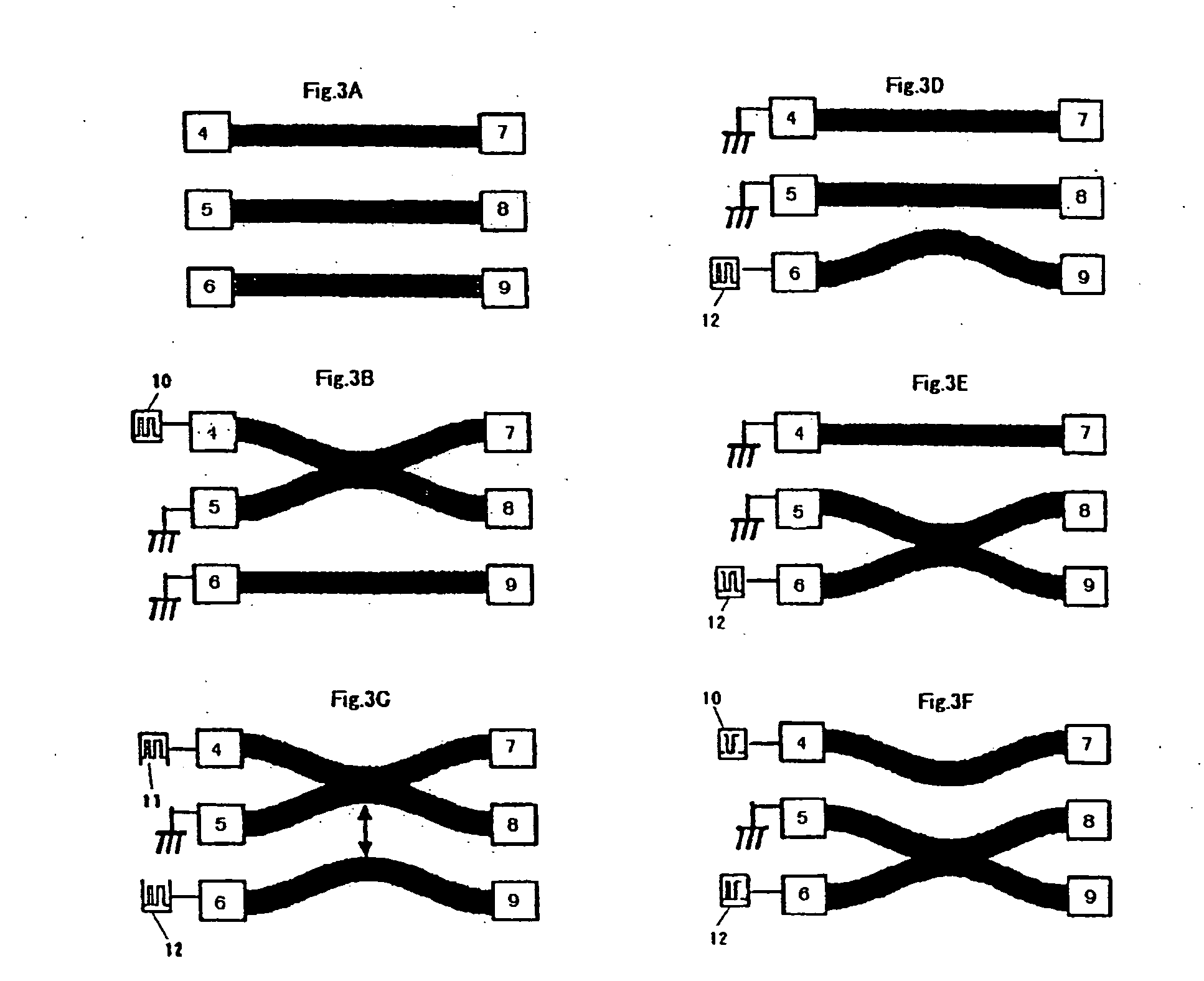Switch
a switch and switch technology, applied in the field of switches, can solve the problems of inability to achieve the desired value of the response time, the inability to guarantee the stability of the switch operation characteristic, and the increase of the application voltage, so as to achieve the effect of reducing the characteristic change and speed
- Summary
- Abstract
- Description
- Claims
- Application Information
AI Technical Summary
Benefits of technology
Problems solved by technology
Method used
Image
Examples
first exemplary embodiment
1. First Exemplary Embodiment
[0033] With reference to FIGS. 1 to 3, explained is embodiment 1 of the invention. FIG. 1 depicts a schematic structural view of a switch according to embodiment 1. A first beam 1, second beam 2, third beam 3 is formed of such a shape and material as transferring an electric signal with no loss, having an insulation film with approximately 10 nm on a surface thereof. The beam 1, 2, 3 is formed, for example, of a metal, such as Al, Au, Cu or an alloy, having a shape in a both-ends-supported beam structure having a thickness 2 μm, a width 2 μm and a length 200 μm and supported at both ends. These are arranged parallel at such a spacing, e.g. of 0.6 μm, to satisfy a given isolation. The beam 1, 2, 3 is not necessarily a both-ends-supported beam structure but may be a cantilever form. Meanwhile, the beam 1, 2, 3 has a beam spring constant to be varied by changing the shape. Incidentally, the beam 1, 2, 3 is based on a structure and process to reduce its inte...
second exemplary embodiment
2. Second Exemplary Embodiment
[0060] Now a second embodiment is explained while referring to FIG. 5. This embodiment is basically the same in structure as the first embodiment. However, a second beam 32 is formed smaller in thickness as compared to the first beam 31 and third beam 33, e.g. the first and third beams are formed 1.5 times greater in thickness than the second beam. In this embodiment, when the first beam 31 and the second beam 32 come into contact, an electrostatic force 35 acts between the first beam 31 and the third beam 33 in addition to an electrostatic force 34 acting between the first beam 31 and the second beam 32. With this structure, even unless a direct current potential is newly applied to the electrode 6 after a contact between the first beam 31 and the second beam 32 as was in the first embodiment, the third beam 33 is to move toward the second beam 32.
[0061] In such a case, in order for the first beam 31 to near toward the third beam 33 to a possible clos...
third exemplary embodiment
3. Third Exemplary Embodiment
[0062] Now a third embodiment is explained while referring to FIGS. 6 and 7. This embodiment has a plurality (four in FIG. 6) of FIG. 2A switch circuits symmetrically about an antenna end 65, as shown in FIG. 6. This can realize a one-input multi-output switch that can distribute an input to one antenna into a plurality of outputs and multi-output them. The switch thus structured can be configured by arraying the switches used in embodiment 1 and capacitively coupling those as shown in FIG. 7. Incidentally, FIG. 7 shows a case having two switch circuits. In FIG. 7, an electrode 71 is formed with a plurality of beams 74 in a comb form, having beams 75 between the beams 74. The beams 75 are respectively coupled with electrodes 72. An electrode 73 is provided oppositely to the electrodes 72. The electrode 71 is connected with a control voltage source 76, the electrode 72 with a control voltage source 77 and the electrode 73 is with control voltage source 78...
PUM
 Login to View More
Login to View More Abstract
Description
Claims
Application Information
 Login to View More
Login to View More - R&D
- Intellectual Property
- Life Sciences
- Materials
- Tech Scout
- Unparalleled Data Quality
- Higher Quality Content
- 60% Fewer Hallucinations
Browse by: Latest US Patents, China's latest patents, Technical Efficacy Thesaurus, Application Domain, Technology Topic, Popular Technical Reports.
© 2025 PatSnap. All rights reserved.Legal|Privacy policy|Modern Slavery Act Transparency Statement|Sitemap|About US| Contact US: help@patsnap.com



